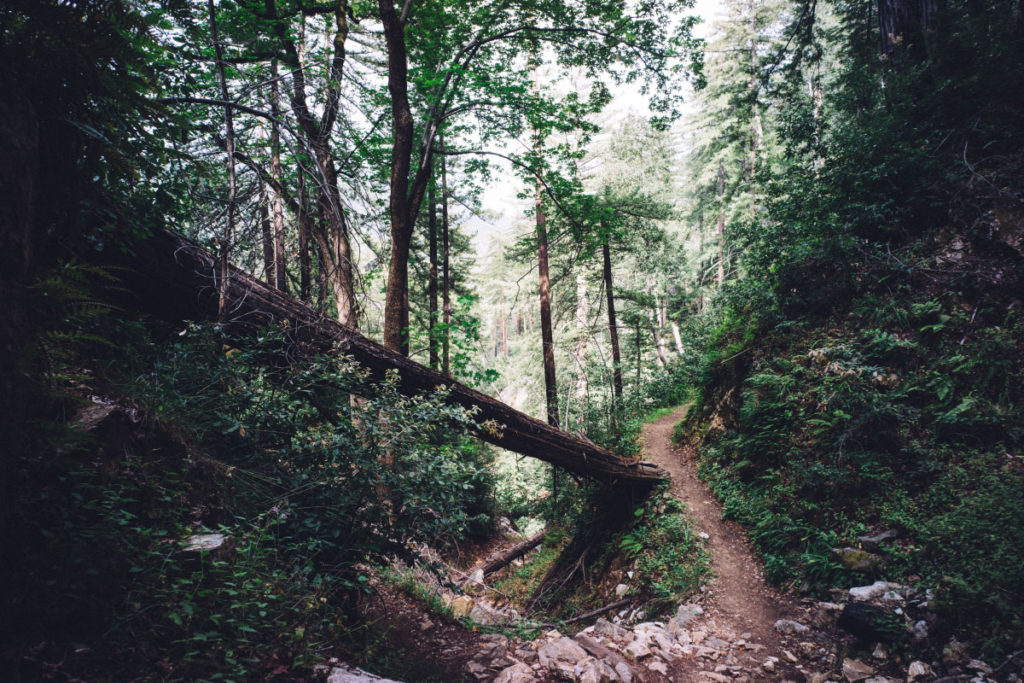Fall time is upon us here in the Pacific Northwest, and that means freezing temps, high winds, and wet weather. With this seasonal weather comes a genuine risk of damage to your home.
As the winds kick up and the ground gets saturated with rainwater, some trees will fall and topple over causing both property and roof damage. If a tree falls onto your roof, you’re in for a massive bill and lots of repair time.
There are several signs that could indicate a risk of a tree falling over. If you see any one of the below signs it might be a good idea to call out a tree expert and have them give you a professional opinion.
If you notice a few big tree branches lying on top of your roof, you should call a roofing expert to check for hidden damage.

Dead branches
Trees that have a lot of dead branches are a dead giveaway that something is wrong. Not only is the tree at-risk of falling, but branches could suddenly give way and come crashing to the ground. A medium sized tree branch can weigh hundreds of pounds and cause significant roof or property damage.
Being that most trees lose their leaves during the fall, it can be challenging to use this as a gauge of the health of a tree. However, if during the summer, you notice a conspicuous area of a tree where branches and leaves were dead or dying, it might be a good time to call in a tree expert for a second opinion.
Rotten Roots
Tree roots that are rotten are another sign of a distressed or diseased tree. However, much like lost leaves, it’s challenging to find rotten roots because most of them are underground.
If you start to notice mushrooms springing up around the roots, base, or trunk of a tree, it could be a sign that there is rot somewhere nearby. Roots that are discolored or look like they have brown or black spots on them are also another indicator of root rot.
Leaf Loss
If a tree starts to lose its leaves from the outside to the inside, this could be an indication of something being wrong with the root zone. Trees will normally lose leaves in a random pattern. If the outer most layer of leaves is completely gone and only a thin inner layer remain, it’s a sign that the tree is not healthy.
Leaves require massive amounts of nutrients and a distressed tree will attempt to shed outer leaves to conserve energy. If your tree has a lot of inner leaves but very few outer leaves, it’s a possible sign of damage or distress.
Leaning Trunk Due to Weather Damage
Did you know that very few trees grow perfectly vertical?
Most trees will naturally lean to one side, so it can be challenging to figure out the cause of a leaning tree. If you notice that your tree is leaning, it could be due to weather damage.
Some examples of weather damage can include high winds, lightning strikes (to the tree trunk), issues with the root system, or even water-logged soil that will cause the tree to lean. If a tree leans more than 15 degrees in one direction due to wind or root damage, it probably needs to be removed.
Deep Cracks or Missing Bark
Areas of the tree where the bark is missing, indented, or otherwise disrupted is considered a weak spot where the tree could crack or break in the future. The Washington State Department of Natural Resources has a field guide that includes in-depth pictorials on the various conditions’ trees can suffer from.
While it may look perfectly sturdy, all it takes is a few days of wet soil and heavy winds to cause it to come crashing down on your roof. Deep cracks in the bark are also a sign to watch out for as they indicate another weak point in the tree.
South Sound Roofing Experts
If you have roof damage from a falling tree, call us at (253) 564-2292 or contact us via our website. At ACME Roofing, we have over 22 years of experience helping put a solid and safe roof over the heads of thousands of Tacoma homeowners. Give us a call today!



